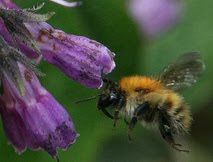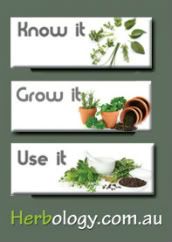Ever wonder how to make an herbal gel? Well Full Circle Botanicals shared on their facebook page how they make theirs and were generous enough to say that we could share it. This is their direct quote,
“All the information here is available for sharing on FB and any other way. No limitations. We are just keeping the gift moving. It all came from the plants. Herbally yours, Michael and Patricia.”
So, I thought some of you might not be on facebook but would enjoy trying your hand at this also:)
“At Full Circle Botanicals we have been making gelled extracts and decoctions for twelve years and have found them to be a good addition to our topical array. Gels fill the niche between salve/oils and liniments offering ease of application and effective penetration. Making gels in the kitchen is easy and quick and you will find ways to play around with the process to suit your temperament and needs.
Agar agar is the base gelling ingredient. It is made from marine red algae and is nourishing to human skin. We are currently using NOW powdered agar which you can find from several sources in different sizes by doing a web search. If you have some of the flake agar it works fine also and it is usually available at health food stores. We use alcohol extracts as well as decoctions. The extracts are concentrated and are good for first aid applications and the decoctions offer a non-alcoholic option which are preferred for use in everyday skin treatments.
This is a two step process since we want to cook the agar agar and let it cool and gel.
Agar agar: 1 slightly rounded Tablespoon of powder
1 quart filtered water
2 Qt. sauce pan with lid
2 qt bowl- metal or ceramic
rubber spatula
Dissolve the agar in warm water which you have preheated in the saucepan. If you are using a gas stove I recommend a heat spacer or a thick bottomed pan. If you have difficultly controlling the heat you an use a double boiler but if you pay attention there should be no problem. Heat the agar to about 200 degrees. It is not necessary to boil it. Stir often and return the lid between stirring to prevent too much evaporation. When the agar has thickened and has bubbled a bit, remove from the heat. We pour the agar into another bowl to speed up the cooling and then cover and put in the refrigerator although if you are not in a hurry just set it aside and it will slowly cool and harden.
Once hardened we quarter the jell in the pan and then remove the four pieces. For your first batch we recommend using one quarter or less depending on how much herbal liquid you have. Refrigerate the remaining for future use.
It may be best to start with a decoction so you can play around with it without fear of wasting alcohol extract. You can, of course, use decoctions and extracts in the same gel. Here is what you need next.
herbal extract or decoction
vegetable glycerin
electric blender
Optional: essential oils
Chop up the agar into little pieces and put into the blender. Run the blender to reduce the size of the agar and then begin to slowly add the herbal liquid. Blend-add liquid-stop. Blend-add liquid-stop. Go easy taking time to mix the slurry with the spatula between blending. There is no perfect consistency so play around until it feels right for your use. You can add water if you don't have enough herbal liquid to finish it off . We often dilute the alcohol extracts . Add a bit of glycerin to smooth it out and add just a bit of tackiness. Go slow with the glycerin. Try 1/2 teaspoon for 8 oz. of the gel to start and you can add or reduce according to you preference. Now if you want to add essential oil this is the time to do it and blend one final time to mix it all well.
We find that gels made this way do not need refrigeration but with decoction-only gels you may want to refrigerate. Occasionally some herbs may separate slightly but stir them and the consistency will return. Our favorite herbs to gel are Calendula, St. John's Wort, Arnica, Plantain, Comfrey and Solomon Seal. Next on the list is Pedicularis. That's it. By the time you are done with one batch your imagination will take you in different directions. Enjoy.”
How many times I have wished for a non greasy feel like salves or oils! This will be wonderful to experiment with:) They also said that they will be adding more information about their gels, so I will share those also as they do. It is so nice to meet folks who feel like I do. This gives me a chance to clarify something about this blog also. I feel just the same as they do. If you read something on this blog you want to share with others, please feel free to do so!
I happen to have some agar and some st. john’s wort, comfrey and calendula, I guess you know what I am going to be experimenting with :)
For those of you unfamiliar with agar agar this is what wikipedia says. I have it on hand to use as a thickener in cooking and for making homemade jello like dessert:)
Have fun and please do share about your agar herbal goodies you make! I use soooo much St. John’s Wort and Arnica oils, it will be very nice to be able to hand out these less messy gels to my little village when they are sore and achy:)
Big Herbal and Honey Hugs to all who visit Comfrey Cottages xx














9 comments:
What an interesting post Leslie! I look forward to experimenting with gels in the future. I'll let you know how I get on. Pen
that would be great Pen!
That’s so cool! As long as you have the agar-agar, you can create your own herbal gel anytime! And it’s even easy to make! What’s more terrific about it is anyone can make it by just following the two-way process as mentioned in this blog. It would definitely be worth trying these concoctions at home. I’m thinking of starting with Arnica so I can come up with my own set of ointments for sprains and bruises!
Hi Katelin! thank you so much for visiting! Yes, this is such a very handy herbal preparation! Do share when you do it:) xxx
Hi there,
I'm trying to create a gel to add petty spurge (a Euphorbia used to remove pre-cancerous tissue, warts, etc.). The plant exudes a milky sap; what do you think would be the best way to preserve it for regular use? I currently just break a stem off the plant and apply it, but would love to have the convenience of a cream, gel, or oil. Thanks for your advice!
I do the same thing with dandelion stem sap. You can try what I came up with that seems to work. Take the plant and whisk it up in the blender with just enough oil to cover..drain the oil and gently heat and add just enough melted beeswax to make it firm. This has been about the only way I can have access to dandelion sap even in the winter. I usually put a second batch of stems in the strained oil and re-blend before making the salve. :)
Thanks; this sounds like a great idea, using the blender with some olive oil. This also gets some of the plant into the mix, which is fine, as petty spurge (Euphorbia peplus) greens and stems also contain some potency. Now off to the back yard to find some weeds! Thanks again.
Karen in New Zealand
i am thinking of making a licorice root gel. i guess i have to make or buy the licorice root extract first. i read licorice is good for eczema. any suggestions? thanks much.
SVA Organics specializes in the manufacture of standardized Herbal Extracts, pure essential oils, carrier oils, herbal extracts, USDA certified essential oils, fragrance, floral absolutes and waxes manufacturers all over World. Founded in 1973, SVA Oraganics is the largest manufacturer of Garcinia cambogia extracts Globally.
Post a Comment